Finding Balance in the Outdoors
- Blog Finding Balance in the Outdoors
“Look! A Fwog! Come on, Mommy!” cries my almost 3-year-old son as he grabs my hand and directs me to a rocky uphill portion of a gorgeous creek. We slip and slide as we make our way along the moss-covered rocks, scrambling up with both hands and feet and laughing when we lose our grip and a foot or hand splashes into the water. The frog had long since disappeared, but that wasn’t the point. The point was that we were on an adventure!
For me, motherhood has been just that: an adventure. A series of outdoor adventures in nature are both mine and my son’s happy place. However, it’s not always a happy adventure filled with laughter and exploration. Sometimes that adventure involves attempting to descend a steep portion of trail with a screaming toddler flailing around on my back. Or staying inside with a cranky little one who is battling illness. Or my least favorite: attempting to determine just what sent my toddler into an epic meltdown and how to handle it without melting down myself. Needless to say, as rewarding as it is, motherhood is also really freaking hard at times!
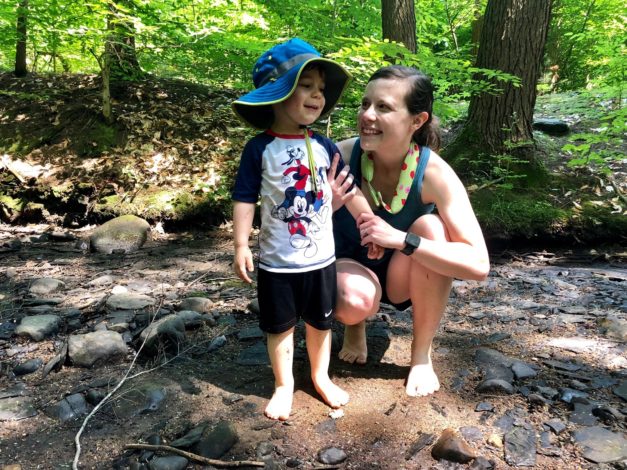
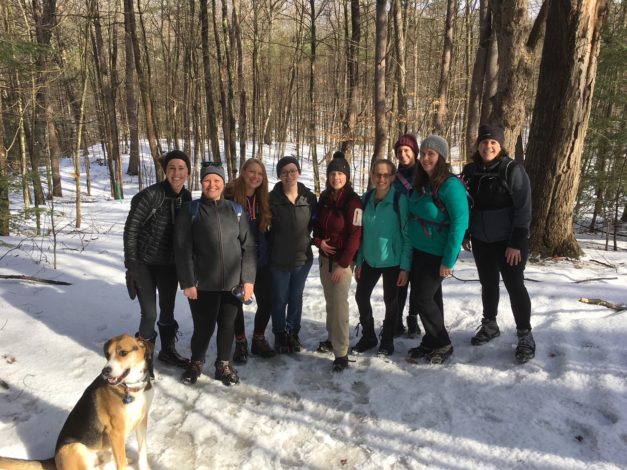 2. Hiking with close friends
Sometimes I just want to unload my frustrations on someone who will listen, so I invite a close friend out for a hike. This is especially true if that close friend happens to be another toddler mama who can assure me that I’m not crazy for thinking my tiny human is crazy. Voicing my negative energy tends to have a cleansing effect for me, and I can then soak up the good vibes that nature has to offer.
2. Hiking with close friends
Sometimes I just want to unload my frustrations on someone who will listen, so I invite a close friend out for a hike. This is especially true if that close friend happens to be another toddler mama who can assure me that I’m not crazy for thinking my tiny human is crazy. Voicing my negative energy tends to have a cleansing effect for me, and I can then soak up the good vibes that nature has to offer.
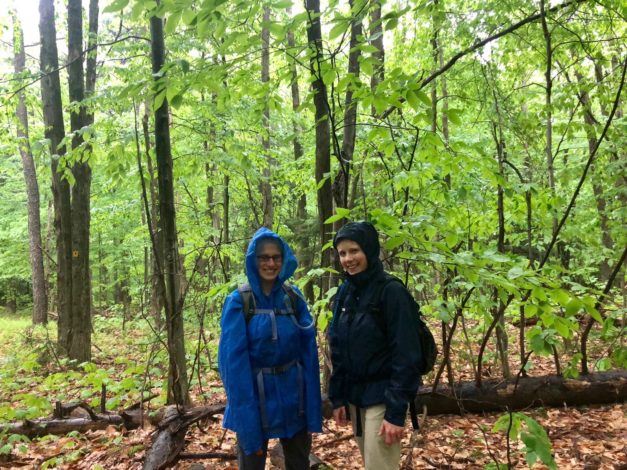 3. Hiking with adult family members
Much the same as hiking with close friends, these hikes can help with the release of negativity. Since my family lives thousands of miles away, these hikes are a rare treat for me. Each time I visit, I try to squeeze in a hike with my dad or brother (both of whom are responsible for my love of hiking). With my dad, we talk about life and I try to soak up as much of his wisdom as an hour-long hike will allow. With my brother, we reminisce and laugh about the shenanigans we got into as kids and fun memories from past hikes.
4. Hiking with your significant other
I call these “date hikes” and they are awesome! We have had a friend come over and “watch the baby monitor” after we put our son to bed so that we can go on a sunset hike. We have also hired a babysitter so that we can hike a tough portion of trail together and toast with a drink or sugary treat at the peak. These hikes bring us closer together as a couple, which in turn helps us be better parents for our little dude.
3. Hiking with adult family members
Much the same as hiking with close friends, these hikes can help with the release of negativity. Since my family lives thousands of miles away, these hikes are a rare treat for me. Each time I visit, I try to squeeze in a hike with my dad or brother (both of whom are responsible for my love of hiking). With my dad, we talk about life and I try to soak up as much of his wisdom as an hour-long hike will allow. With my brother, we reminisce and laugh about the shenanigans we got into as kids and fun memories from past hikes.
4. Hiking with your significant other
I call these “date hikes” and they are awesome! We have had a friend come over and “watch the baby monitor” after we put our son to bed so that we can go on a sunset hike. We have also hired a babysitter so that we can hike a tough portion of trail together and toast with a drink or sugary treat at the peak. These hikes bring us closer together as a couple, which in turn helps us be better parents for our little dude.
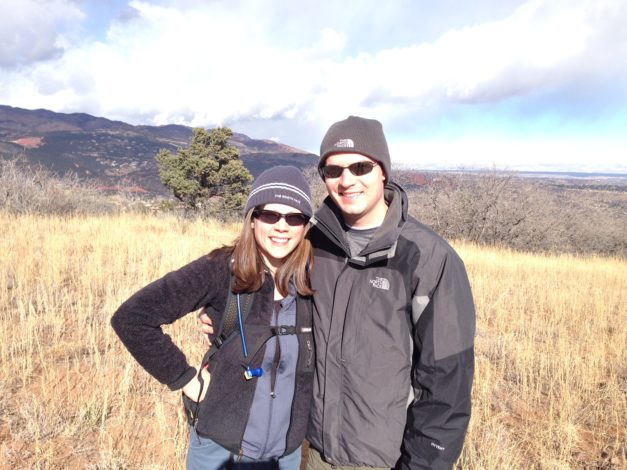 5. Hiking solo
While I tended to avoid hiking solo once I became a parent, true alone time in nature can be some of the best therapy you don’t have to pay for. This past winter, I hosted a Solo-Saturday hike for my Hike it Baby Branch that turned out to be a no-show. Instead of heading home, I decided to hit the trail by myself, altering the original long route for a shorter one that included a great view. As I started hiking, it started to snow, making the landscape look like something from a postcard. Mine were the only footprints on the trail, and the only sounds were those from a trickling creek nearby. I found myself in a winter wonderland and the experience was magical! Ever since that hike, I have gone on multiple other solo hikes and though I still stick to trails I know well, I am slowly shedding the fear of being alone in nature and gaining the confidence needed to trust my instincts on the trail.
I credit the 10k Women Trail Project for providing the inspiration I needed to regain my balance again. It helped me realize that taking care of my own needs as an individual is exactly what I required to become a better mother, spouse, friend, etc. I found my balance in the outdoors, and I hope I can inspire others to do the same.
5. Hiking solo
While I tended to avoid hiking solo once I became a parent, true alone time in nature can be some of the best therapy you don’t have to pay for. This past winter, I hosted a Solo-Saturday hike for my Hike it Baby Branch that turned out to be a no-show. Instead of heading home, I decided to hit the trail by myself, altering the original long route for a shorter one that included a great view. As I started hiking, it started to snow, making the landscape look like something from a postcard. Mine were the only footprints on the trail, and the only sounds were those from a trickling creek nearby. I found myself in a winter wonderland and the experience was magical! Ever since that hike, I have gone on multiple other solo hikes and though I still stick to trails I know well, I am slowly shedding the fear of being alone in nature and gaining the confidence needed to trust my instincts on the trail.
I credit the 10k Women Trail Project for providing the inspiration I needed to regain my balance again. It helped me realize that taking care of my own needs as an individual is exactly what I required to become a better mother, spouse, friend, etc. I found my balance in the outdoors, and I hope I can inspire others to do the same.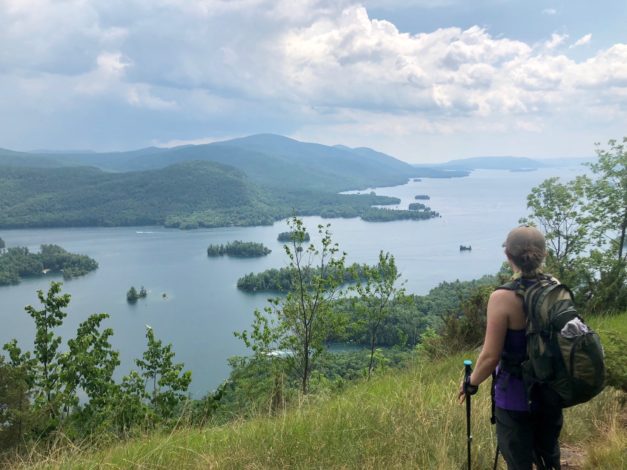

Knowing when you're overwhelmed
We live in a society that makes us feel as though we should be able to handle everything ourselves and look good doing it. We wear so many hats at any given time: mother, significant other, daughter, employee, boss, friend, mentor, etc. And yet we tend to give the least amount of attention to our most important hat, the one closest to our head that keeps all the others in balance: me. If we don’t take care of what is closest to us, what is inside of us both physically and emotionally, the roles we play in life will suffer. I discovered this when I started to feel extremely overwhelmed by motherhood. While I love my son more than anything, my whole life had become about taking care of his needs and ignoring my own. I started to snap at him and my spouse much more frequently and found myself close to tears over the smallest things, and I knew I needed to do something. But what? This was around November 2017 when the 10k Women Trail Project kicked off. That’s when it hit me: I needed me-time in nature. My husband encouraged me to invite some friends for a ladies-only hike, so that is exactly what I did. And, oh, what a difference! Getting out on the trail without having to keep an eagle-eye on my toddler or carry his 30+ pounds on my back was an enlightening experience. And I could have adult conversations and go for extra miles without worrying if I brought enough snacks or whether my toddler would start sprinting in the opposite direction. I felt guilty at first since I was having so much fun without my son, but then I realized something. I wasn’t fussing at him as much, and I was more understanding and didn’t let typical toddler behavior eat at me like it was before. And I had MORE fun with my son during our outdoor adventures together because my own needs were being met. As a result, I was finally finding my balance with some personal nature therapy!Finding balance in the outdoors
So what does “finding balance in the outdoors” look like? The beauty of balance is that it is a very personal thing. For me, it means coupling my frequent outdoor adventures with my son with a “me-time” outdoor adventure at least twice per month. These me-time adventures vary each month, but generally fall into one of the following categories. 1. Hiking with a group Back in November when I realized that I needed some kid-free hiking time, I wasn’t sure how to go about it since I was a little leery of hiking solo. That’s when I got the idea to start “Solo-Saturdays” 1-2 times per month with my Hike it Baby Branch. For these hikes, the focus was on kid-free adult time (though we never left out the parents who needed to bring their young infants for feeding or attachment purposes). I would grab some doughnuts beforehand and we would set out on the trail, chatting and laughing the whole way. I loved how each hike would pull in some mamas that were new to hiking along with more advanced hikers. Regardless of level, by the end of the hike, everyone was wearing a smile. Many of those new hikers became my most frequent participants as I continued my Solo-Saturday hikes, and two of them began hosting their own hikes for our Hike it Baby branch! 2. Hiking with close friends
Sometimes I just want to unload my frustrations on someone who will listen, so I invite a close friend out for a hike. This is especially true if that close friend happens to be another toddler mama who can assure me that I’m not crazy for thinking my tiny human is crazy. Voicing my negative energy tends to have a cleansing effect for me, and I can then soak up the good vibes that nature has to offer.
2. Hiking with close friends
Sometimes I just want to unload my frustrations on someone who will listen, so I invite a close friend out for a hike. This is especially true if that close friend happens to be another toddler mama who can assure me that I’m not crazy for thinking my tiny human is crazy. Voicing my negative energy tends to have a cleansing effect for me, and I can then soak up the good vibes that nature has to offer.
 3. Hiking with adult family members
Much the same as hiking with close friends, these hikes can help with the release of negativity. Since my family lives thousands of miles away, these hikes are a rare treat for me. Each time I visit, I try to squeeze in a hike with my dad or brother (both of whom are responsible for my love of hiking). With my dad, we talk about life and I try to soak up as much of his wisdom as an hour-long hike will allow. With my brother, we reminisce and laugh about the shenanigans we got into as kids and fun memories from past hikes.
4. Hiking with your significant other
I call these “date hikes” and they are awesome! We have had a friend come over and “watch the baby monitor” after we put our son to bed so that we can go on a sunset hike. We have also hired a babysitter so that we can hike a tough portion of trail together and toast with a drink or sugary treat at the peak. These hikes bring us closer together as a couple, which in turn helps us be better parents for our little dude.
3. Hiking with adult family members
Much the same as hiking with close friends, these hikes can help with the release of negativity. Since my family lives thousands of miles away, these hikes are a rare treat for me. Each time I visit, I try to squeeze in a hike with my dad or brother (both of whom are responsible for my love of hiking). With my dad, we talk about life and I try to soak up as much of his wisdom as an hour-long hike will allow. With my brother, we reminisce and laugh about the shenanigans we got into as kids and fun memories from past hikes.
4. Hiking with your significant other
I call these “date hikes” and they are awesome! We have had a friend come over and “watch the baby monitor” after we put our son to bed so that we can go on a sunset hike. We have also hired a babysitter so that we can hike a tough portion of trail together and toast with a drink or sugary treat at the peak. These hikes bring us closer together as a couple, which in turn helps us be better parents for our little dude.
 5. Hiking solo
While I tended to avoid hiking solo once I became a parent, true alone time in nature can be some of the best therapy you don’t have to pay for. This past winter, I hosted a Solo-Saturday hike for my Hike it Baby Branch that turned out to be a no-show. Instead of heading home, I decided to hit the trail by myself, altering the original long route for a shorter one that included a great view. As I started hiking, it started to snow, making the landscape look like something from a postcard. Mine were the only footprints on the trail, and the only sounds were those from a trickling creek nearby. I found myself in a winter wonderland and the experience was magical! Ever since that hike, I have gone on multiple other solo hikes and though I still stick to trails I know well, I am slowly shedding the fear of being alone in nature and gaining the confidence needed to trust my instincts on the trail.
I credit the 10k Women Trail Project for providing the inspiration I needed to regain my balance again. It helped me realize that taking care of my own needs as an individual is exactly what I required to become a better mother, spouse, friend, etc. I found my balance in the outdoors, and I hope I can inspire others to do the same.
5. Hiking solo
While I tended to avoid hiking solo once I became a parent, true alone time in nature can be some of the best therapy you don’t have to pay for. This past winter, I hosted a Solo-Saturday hike for my Hike it Baby Branch that turned out to be a no-show. Instead of heading home, I decided to hit the trail by myself, altering the original long route for a shorter one that included a great view. As I started hiking, it started to snow, making the landscape look like something from a postcard. Mine were the only footprints on the trail, and the only sounds were those from a trickling creek nearby. I found myself in a winter wonderland and the experience was magical! Ever since that hike, I have gone on multiple other solo hikes and though I still stick to trails I know well, I am slowly shedding the fear of being alone in nature and gaining the confidence needed to trust my instincts on the trail.
I credit the 10k Women Trail Project for providing the inspiration I needed to regain my balance again. It helped me realize that taking care of my own needs as an individual is exactly what I required to become a better mother, spouse, friend, etc. I found my balance in the outdoors, and I hope I can inspire others to do the same.
Read more
Related Content




Comments